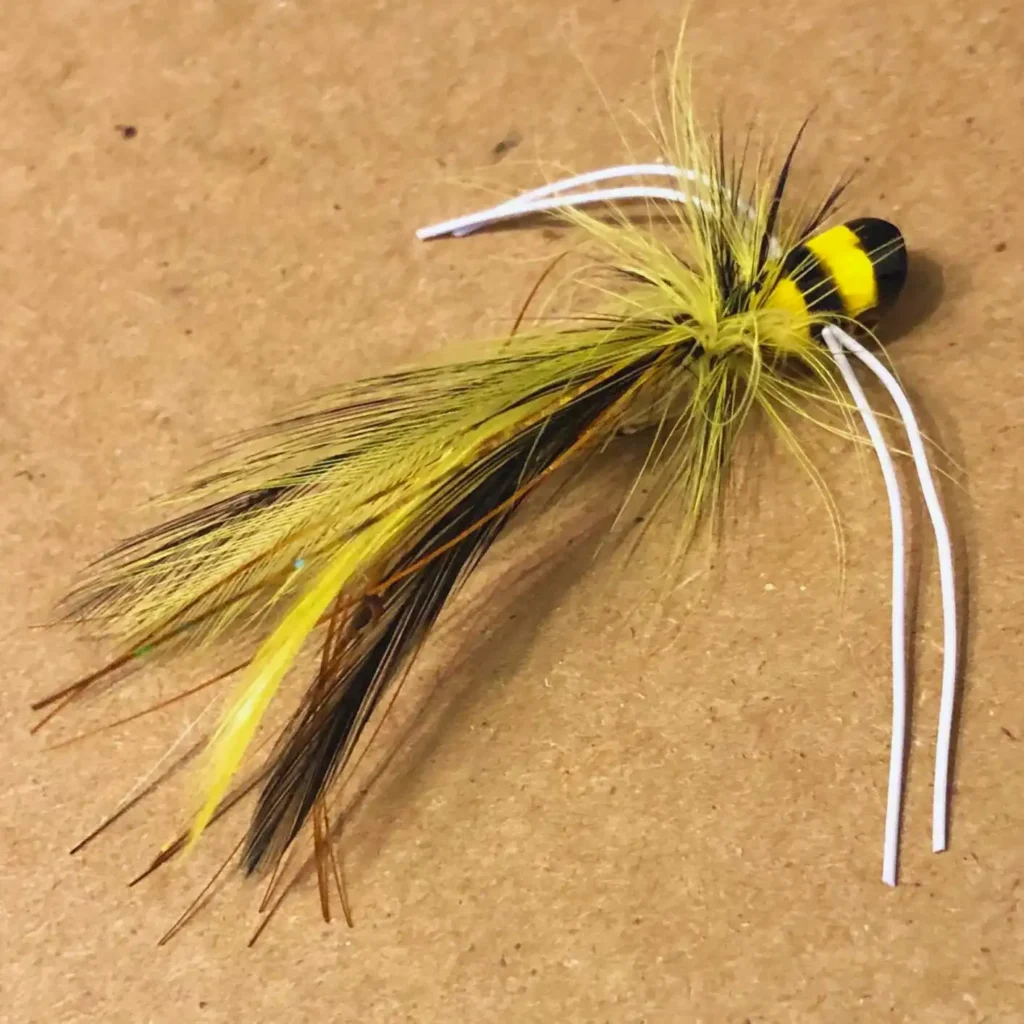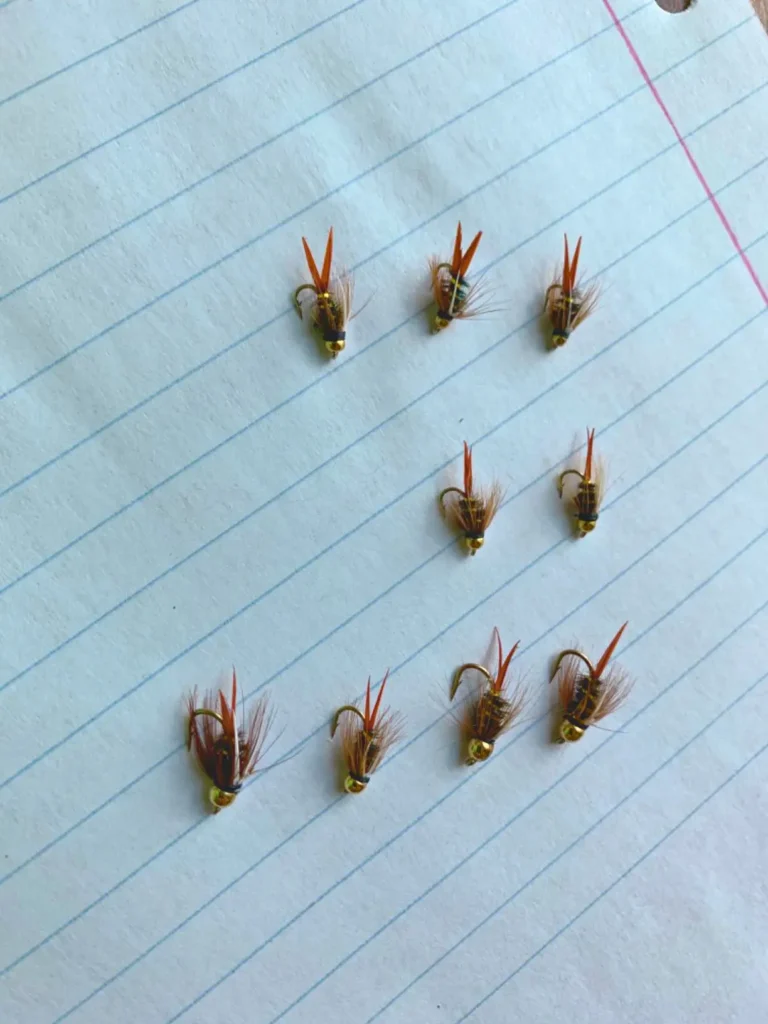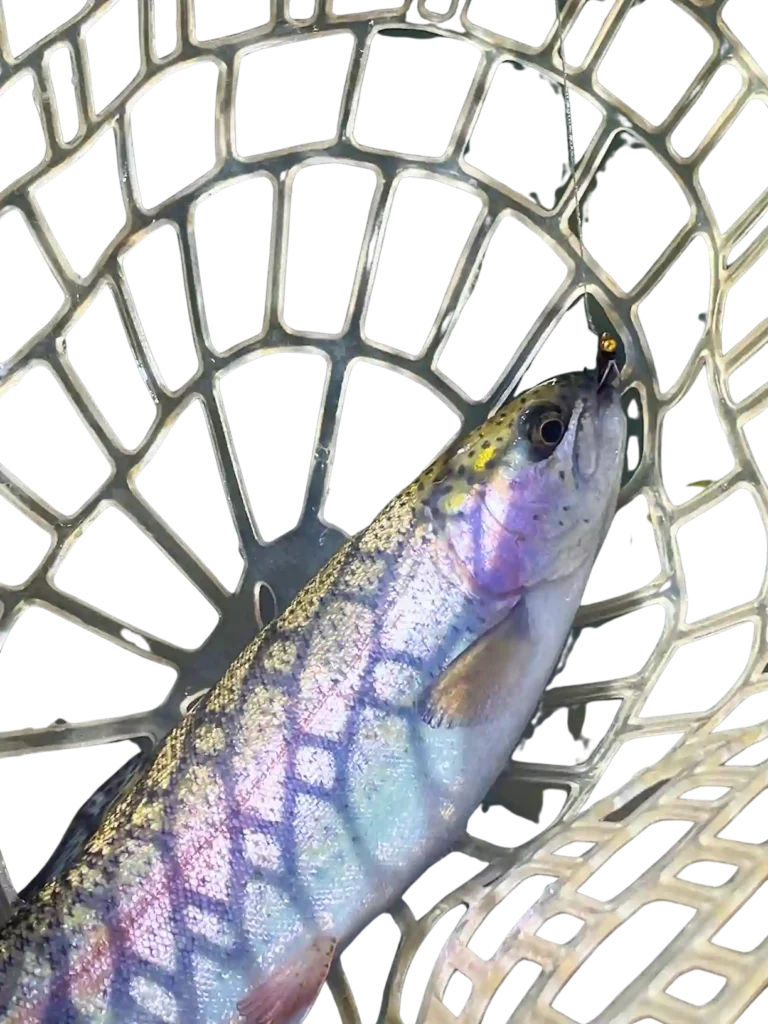Can you fly fishing with a spinning rod?
Why not. Many anglers need to be aware that fly fishing can be effectively done with spinning rods. Despite common misconceptions, fly fishing is more comprehensive than just fly rods. I suggest using fly fishing with a spinning rod to successfully mimic the movement of aquatic insects that are the food of certain fish species; moreover, its cost is adequate.
Here are a few tips that help you for the best performance in various body types and are discussed in detail later in the article.
PRO TIP 1:
In the river, cast the Setup upstream and let it drift downstream with the current. When bubbles approach you, keeping the line tight is essential to avoid slacking. The tip is best to prevent slacking and create better drifts and hook sets.
PRO TIP 2:
In still water, cast and let the flies sit for a while, and you can add some gentle movement with the help of a rod. Keep your eye on whatever the fly you’re using—respond quickly if you see any action.
PRO TIP 3:
Using streamer in moving and still water, use techniques like jerking, slow dragging, or twitching along the bottom. You can add bubbles or nymphs if streamers aren’t enough to attract the fish.
One summer, my friends and I journeyed to a remote fishing spot known for excellent fly-fishing opportunities in the heart of the US. As a younger angler with limited experience, I relied on my trusty spinning rod for comfort and versatility. One day, when I struggled to get any bites from fish, my experienced friend revealed his secret- fly fishing with a spinning rod with great finesse, he deftly employed a nymph pattern beneath a slip bobber. Inspired by his passion, I tried it myself and found that sometimes, stepping out of our comfort zones can lead to remarkable experiences. As I continue my fishing adventures, I am grateful for that experienced angler friend who opened a new world of fishing possibilities for me.
Now, after exploring fly fishing and spinning techniques for the past decade and having been an experienced angler, modern advancements have transformed the discussion about using fly rods Vs. spinning rods for fishing. The fly fishing technique with a spinning rod is similar to using a fly rod, except using the fly lines and rod to cast the fly; the anglers rely on the weight of the float to do so. For fly fishing, using the weight of a taper and a leader is considered to push the fly forward toward the target, whereas spin fishing deals with casting a lure and hooking the weight to reach the point. However, know the difference between fly fishing Vs. spin fishing
How does fly fishing work?
Based on my experience with fly fishing, I’ve found that it involves using long and limber rods for casting small flies for feeding purposes onto the water’s surface, imitating the natural insects that fish feed on. To achieve this, I had to practice the back-and-forth casting movement, allowing me to present the fly realistically.
One important aspect of fly fishing is the use of specialized fly lines that tend to be thinner and lighter when compared to traditional fishing lines, enabling me to cast lightweight flies effectively.
For the best results, I learned the importance of the leader and tippet material when tying the fly to the fly line. The tippet is invisible, helping me to fool even the most cautious fish, and seeing how effective this stealthy presentation can be when fishing is fascinating.
Flies closely resemble aquatic insects, making them popular among anglers. However, it was challenging for beginners, but in my case, it wasn’t; with the basic knowledge I gained, I could improve my skills steadily, which made me more confident on the water.
That’s how fly fishing works, but if you don’t have a fly rod and want to save money, buy a new setup. Our article has covered all the details of how to fly fishing with a fishing rod.
The Setup for fly fishing with a spinning rod:
Many people tend to overlook the possibility of fly fishing with spinning rods. When listening to fly fishing, people imagine using long fly rods, loaded floating fly lines, and 10 to 2 casting techniques.
Well… I’ve found that the traditional fly-fishing Setup is perfect for presenting small, lightweight flies, while there’s a way to fly fish with a spinning rod and reel combo.
Of course, a spinning rod won’t allow you to execute the traditional fly-fishing technique. But with a bit of knowledge of accurate Setup, I’ve found it to be a practical and effective method for fishing by using a wide range of flies.
I typically use a lighter spinning rod (6-7 ft.), perfect for flexibility and sensitivity for delicate presentations. I pair it with a light fluorocarbon or monofilament line on the reel, allowing me to imitate the natural insects effectively.
Instead of a weighted floating fly line, I attach lightweight artificial flies paired up with fluorocarbon or monofilament leader, that is attached to the main line, perfect for fishing with smaller flies and proven successful for catching species of small streams and tight spaces.
The combination of setups, named “ultralight,” gives me an exciting fishing experience, adding light, moderate fast to the fast action of a spinning rod with a light reel.
The reel matches the rod, keeping in mind the recommended weight of the line, usually ranging from 4 to 10 pounds.
Well, it’s essential to choose either a mono or fluorocarbon line when you’re spooling the reel. I see young anglers now prefer using a braided main line, which provides low volume with high strength. If you opt for a braided main line, it’s important to clear the leader line. Fluorocarbon works perfectly for attaching the flies to the braided line.
However.
Light flies still require some weight for casting; you can use a bubble or split shot.
Rod & Reel Combo:
For the right balance when casting and making your fishing experience more and more amazing, you should opt for a fast-action UL (ultra-light) rod.
I’ve tried many different setups. Out of all, the rod, ranging from 4 to 7 ft., works like a charm. The length is perfect for precise casting.
Now, let’s discuss the reel. A lightweight spin reel is the way to go when you want to balance the rod without adding extra or unnecessary weight. Trust me, it’s a great combo for reducing fatigue during the long hours of fishing sessions or especially when you’re going through any health issues.
For the action, I highly suggest you choose moderate to fast action if you’re new to this field, while fast action is pro at fishing, like me. This kind of action gives me the power to cast with accuracy and control while still not compromising the flexibility to handle any unpredictable fish movement.
line:
Absolutely! Choosing the right fishing line is very important for UL setup. As per my suggestion, I’ve found the line weight rating of 4 lb. – 10 lb. is just amazing. Personally, I use 6 or 8 lb. Lines because they provide me with a balance between sensitivity and strength.
So, now you’re thinking about which type of line is suitable. Well, I like to use braided lines for my spin-casting reels. Why this? Because it provides me strength and sensitivity, which is important for detecting subtle strikes. Besides, the thin braided line’s diameter allows for casting longer distances, which is always a bonus.
To complete the Setup, many anglers, including me, like the fluorocarbon leader, attached at the end of the braided line, help conceal it underwater, making it less visible under the water to the fish.
Casting bubbles:
Using dry flies, nymphs, and bubbles is a perfect choice. When using bubbles, I sensed the excitement along, just like a little companion to my dry fly, ensuring it would stay gracefully afloat. As in the case of nymphs, the bubbles are lifesavers, placing them just where I wanted them to be in the water.
Well, for dry flies, choosing the small bubbles is essential; I want them because of their lightweight, not interrupting my delicate presentation, yet heavy enough for casting with precision.

Nymphing is a whole new experience for you if you’re new. You need to be more cautious about the bubble’s size and weight. I prefer to suspend my nymphs perfectly, neither sinking too immediately nor floating too high. Remember when in Riffly water, the bubble won’t be dragged down too easily by the weight of flies.
However, …
My experience, even with the right bubble weight and size, came out that flies weren’t getting close to the riverbed. So, I came up with the idea of using a split shot over the fly.
In this method, split shots add weight and help sink deeper, bringing it closer to the fish.
Well, the streamer option can deduct the use of a bubble.
Another method is to attach a floating device, “float” (like a bobber), to the fly. The float is amazing; keeping the fly at the surface adjusts how deep your fly goes by moving it up or down the line. The easy way to see if a fish is biting is because the float moves with the bite of the fish.
Dry flies:

Dry flies are perfect for imitating the species on the water’s surface. They are well-replaced insects and generally float on water surfaces.
Setup for dry flies:
For a reel with a fluorocarbon or monofilament line, you can opt for bubble floating that Favours when you cast the fly. Slide the bubble float onto the line about 3 to 4 ft above the end to tie on the fly.
Once the bubble is in place, I connect my dry fly to the end portion of the line, and it’s all set to fly. Sometimes, there is also a need for a second dry fly to a 16-inch section of line and tie it to the hook bend of the first fly, attracting more fish.
Pro tip: if I use a braided line and not the mono or fluorocarbon, I first connect the 6 ft fluorocarbon line, acting like a leader, and then attach a bubble float to enjoy an exciting fly.
Nymph:

Nymphs or bobbers are one of the best flies. Nymphs are insects living underwater and are found under the rocks of rivers. They are the favorite foods of trout and steelhead.
Nymphs also have a fancy name, strike indicator.
They are present in various sizes, shapes, and colors. Of all the colors, brown and black color supports imitations more well.
Anglers also use different patterns, like worm and egg patterns and aquatic beetles.
The two effective methods that I used with nymphs are float fishing and bottom bouncing, later explained in detail.
Setup for nymphs/ strike indicator:

In the case of using nymphs that involve the floating Setup, I use two nymphs that sink beneath the water, whereas, in deep areas, the nymphs are not sinking too deep; the attachment of a split shot is a great option.
The Setup is almost the same as dry flies, sliding the bubble float at the line about 3 to 4 ft above the end portion while attaching the nymphs to the line. Add split shots between the bubble and the first nymphs for deeper nymphs.
Between two nymphs’ bead heads and non-bead heads, I like using bead head nymphs.
Streamers:

Streamers have weighted heads and mobile tails and tend to be tied on larger hooks. These are the perfect presentation of wet fly.
Setup for streamers:
For the streamer setup, if I’m using a braided line, I prefer a leader that is 6 ft long and made with fluorocarbon material, where I attach the streamer fly. The weight is added for proper casting.
Guide for young anglers on fly fishing with a spinning rod, my experience:
I know you’re just starting with fishing and searching for many answers; likewise, I was once in your shoes, too. One question that often arises Is whether fly fishing is more effective than other methods like spin fishing. Well, let me tell you from my experience that, yes, fly fishing can be very effective, especially in the case when you’re in rivers, not that much in lakes.
People love fly fishing not only to catch the fish but also to imagine the whole experience it offers, like you’re in nature, the greenery everywhere, breathing in the fresh air, and sensing the thrill of water rushing around you. It’s the most amazing outdoor activity that makes your experience memorable.
Dead drift:
When I fish with bubbles, dry flies, or nymphs in a location like a river, I cast my Setup at an angle upstream. With the water pressure on the bubble, I quickly close the reel’s bail and start retrieving the line to match the river’s speed.
With the movement of flies downstream, avoiding slacking in the line is essential. In case of slack, I won’t be able to hook if the fish bites.
To keep the line tight, I lift the rod tip a bit while reeling in slack, helping to prevent the line from sinking, keeping it between the rod tip and bubble, giving the smooth drift experience and improving the chance of fish hooking.
Fly fishing with a spinning rod is more amazing. By using the “dead drift,” the flies, let the flies move naturally with the water flow like real insects. So, I focus only on reeling, not too fast.
In still water, I like to cast and pause to watch. Sometimes, letting the flies sit still works best. If that doesn’t work, I give the rod a little twitch, pause and repeat, and so on.
Nymphing or dry fly fishing:
I always keep a close eye on the bubble or the floating fly, meaning I pay attention to the targeted area. If the bubble drops, moves weirdly, or any little move is cued to set the hook fast!
Fly fishing using spinning rods differs from regular fishing, unlike bait fishing. If fish feel the fly is unreal, they quickly sense the danger, leading away immediately, so be ready to set the hook as fast as you can.
But, in the case of using streamer fishing:
No matter whether in still water or stream, I opt for different Retrieves like jigging, jerking, or steady reel-in.
I prefer all spots where fish can hide, like having more depth, sunken areas, or overhanging structures.
I pause after casting to let it sink to a required depth, which might be close to that structure or bottom. After that, retrieve the jerking movement, reeling in slack, pause, and repeat. You can add different motions.
If the streamer isn’t attracting any bite, I like to add bubbles about 4 ft above the fly and rely on the same nymphing technique discussed earlier.
Float drift by covering the area:
To maximize the chances of fishing, by using fly fishing with a spinning rod., I prefer covering the water effectively. With my spinning rod and float, I always start at the top of the water (pool), right at the start of the first drop. That’s the most promising spot where you can get desired results. I keep my whole mind on productive areas like bubble lines, current seams, and depth of the slot. Reading water is essential here!
For more chance of catching, I spread out float drifts, covering more area from outside, leaving the snag areas or specific areas that are hard-to-reach spots.
Our thoughts:
Fly fishing can be blasted by using a spinning rod; you don’t need to worry about the cost; it’s not that expensive. You just need to know the proper Setup, flies, and techniques and always be ready to set the hook when the fish show interest. Enjoy making memories!
